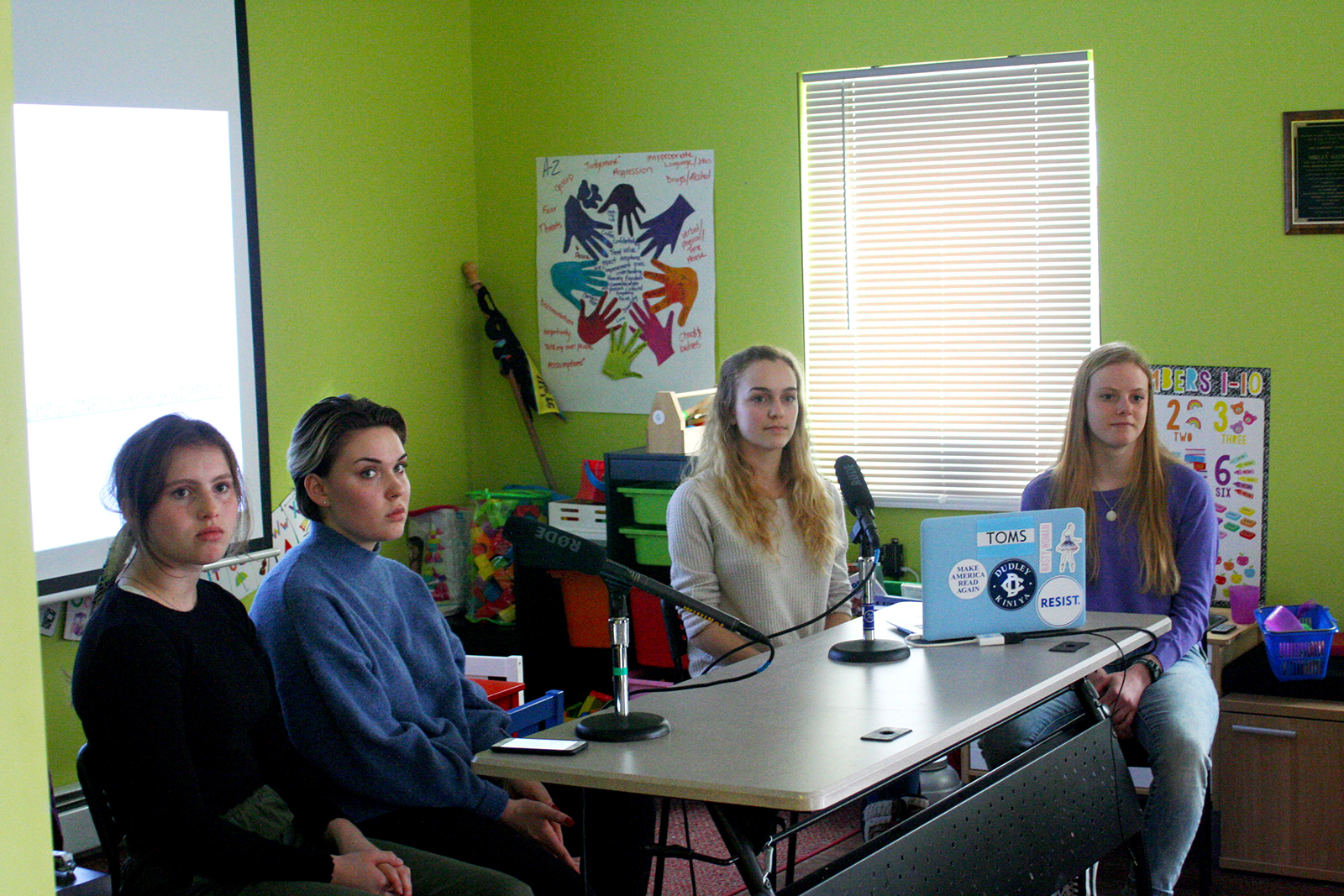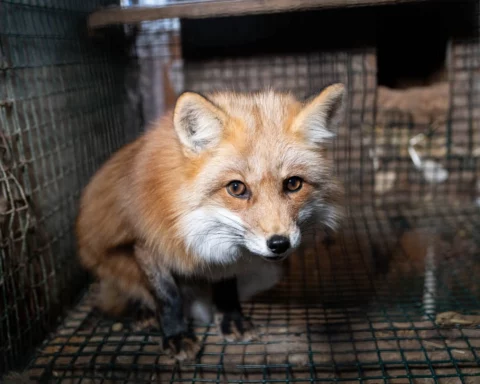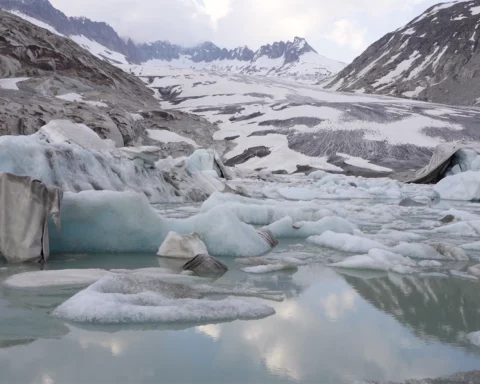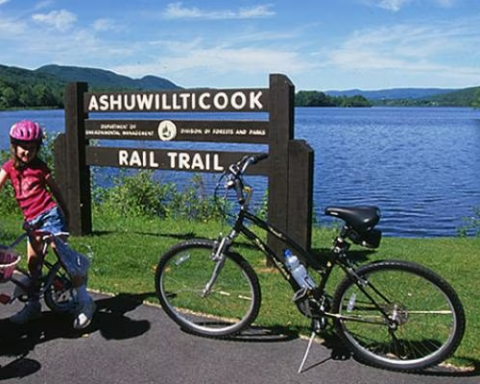The youth of Earth have a message for its leaders today: You have failed to lead, so now you’ve forced us to.
By synchronizing worldwide demonstrations demanding action to reduce the human activities driving climate change, young people from elementary school on up through college are staging sit-ins, walkouts, marches, strikes, and town halls to make it clear to elected officials that they won’t sit by idly as the planet burns. Or floods. Or is ravaged by extreme weather. Or all of the above.
Many people paying attention to climate news these last few months have likely heard the name Greta Thunberg, the sixteen year old Swedish activist who has been on school strike every Friday to protest climate inaction in her country in front of the Swedish parliament in Stockholm. And with good reason—few people of any age have managed to describe the stakes of continued foot-dragging on topics that are, except for a few heretical climate hold-outs, with such clarity. And although she has captured the world’s attention with her no-BS, point-blank oratory at the United Nations, the World Economic Forum meeting in Davos, Switzerland and elsewhere, the world’s youth have been getting impatient for some time now. In 2018, a group of 25 children and young adults in Colombia successfully sued their government to force it to obey its own rain forest protection laws. In 2017, the climate action group Zero Hour formed and brought together youth of color from across the United States to organize the first-ever Youth Climate March in Washington, D.C. in July of 2018. Similar organizations have coalesced in Africa, Asia, Australia, and Europe.
Now, March 15 marks the combined strength of their resolve to make the urgent, common sense appeal to protect a future in which they will be the primary victims of climate collapse.
Locally, groups of students, both at Mt. Greylock Regional School in Williamstown and Monument Mountain Regional High School in Great Barrington, are making sure that their message hits home.
One Mt. Greylock senior, Karen McComish, explained that participation in the global climate strike is a natural extension of her advocacy work through the school’s Youth Environmental Squad going back six years. A member of her church in Williamstown reached out to her to suggest exploring wider environmental networks
“Anne O’Connor contacted me about this live stream that the Sunrise Movement was going to be providing that would detail their plan for 2019,” McComish said, “so a bunch of us went to the first Congregational Church and hosted a watch party for this live stream. And we had community members, Greylock students, students from Buxton. And that’s where they first detailed these national meetings with your representatives to get behind the Green New Deal and just an overall strategy for the year. And that’s kind of where it all started.”
As an umbrella group for political awareness and participation, students at Mt. Greylock formed the student club, R.E.V. (Register. Educate. Vote.) this year. McComish and fellow members Ella Dudley, Maddy Art, and Sophie Jones recently presented a report of their research, activities, and upcoming actions at a regular meeting of progressive political group Greylock Together. Full video of the discussion is available via WillieNet.
Working together with the climate response group, the Sunrise Movement, are other organizations, both regional and national, that are making the March 15 demonstration a milestone moment. Massachusetts Youth Climate Strike began as a Boston-centered team of activists, then connected with students across Massachusetts who wanted to multiply their efforts.
Stephanie Kuplast, a Southampton high school student, is one of the organizers for Massachusetts Youth Climate Strike, and says what started as an isolated group in Boston has quickly spread state-wide as the climate crisis dominates more and more of the public consciousness.
“Yes, this is translating to action massively across Massachusetts,” Kuplast said. “Originally, Boston started as the only strike and so that’s why we called ourselves the Massachusetts Youth climate strike, because we were the only movement in Massachusetts, and then that has actually turned into four different, but partner movements all the way from Great Barrington to Amherst and to Cape Cod at Craigville Beach.”
Kuplast is headed to the State House in Boston to take part in a full day of activities geared toward building support in the Massachusetts General Assembly for climate legislation with some actual teeth in it. She says that she’s been excited to witness the mobilization that continues to snowball as more people hear about and support the movement.
McComish agrees. “There are a lot of people my age — I’d be careful not to say everybody, but it feels like everyone,” she said, “is at least aware of everything that’s going on, and it’s becoming easier to become involved, too, because young people are realizing that we can be involved. Not only can we pay attention to the news and tweet on social media, but we can do more than that too. Especially after the help and support of the community in general here, [we realize] that people will listen to us and that we can do it. So yeah, I think there’s definitely growing interest and also a growing agitation.”
The students at Mt. Greylock are keeping their activism close to home, rather than traveling across the state. In part, because of the fairly recent walk-out in solidarity with the March for Our Lives movement to put an end to school shootings, the young environmentalists decided to create a more community-wide event that would give younger students a chance to participate.
McComish explained, “After talking with some parents in the community who said that their kids want to be involved, their younger kids, we decided it would be best and most powerful if we had our strike in solidarity at 3:15. And if we walked with the elementary school kids from [Williamstown Elementary School] to the roundabout, we would have some visibility and hopefully some coverage.”
She said that the marchers will demonstrate at Field Park in the rotary junction of Routes 2 and 7, which would give them a chance to demonstrate a real presence to passersby.
“And the goal of that,” said McComish, “is to show that the young kids are aware of the situation and that we’re scared.”
In Great Barrington, one of the Youth Climate Strike organizers, Claudia Maurino, will be hosting an in-school event that aims to educate fellow students and faculty.
“Some kids at Monument Mountain and I are reshaping the national all-day strike to fit our school,” explained Maurino, “and as such are hosting a “flash information walkout,” as I like to call it, where students are invited to leave class and congregate in the auditorium where myself and six or seven others will lead mini-group discussions about the importance of climate change advocacy and taking action. We’re going to discuss ways to implement environment-friendly strategies in our lives and how we can contact our legislators and government officials.”
Maurino says she’s experienced a lot of support in her town for young people standing up for what they believe in and taking a stand.
“Personally, I’ve felt very supported in the past by educators, administrators, and other adults in the community,” she said. “I think, on the whole, my generation is a lot more politically aware and politically active than previous generations, and it gives me a lot of hope for the future —which is so sorely needed right now.”
In Northampton, organizer Saraphina Forman has been working to protect the environment since elementary school, when she started a dog-walking service to raise money for wildlife conservation. Her efforts locally have, like those of so many of the students involved in the movement, been about just getting people to understand the seriousness of the situation.
“In recent years,” says Forman, “as the climate crisis has been more and more crucial to take action on, and with the IPCC report coming out in October by the UN on which stated that we have, at this point 11 years to stay under the two degree warming target, we now know there are no second chances and there’s so much at stake. So I think that’s why environmental activism is super important to me, and we really are—it sounds dramatic to say, but we are—kind of on the edge of extinction here, so we can’t continue business as usual.”
McComish echoed Forman’s tone of urgency.
“Well, that’s the scary thing,” she said, “is that it’s hard to know, we don’t really know what is going to happen. Already, extreme weather is just becoming normalized. We are already witnessing, and in the middle of, a climate crisis. It is something that I see in the future, and I’m afraid of in the future, but it’s also something that’s affecting us now. I’ve grown up knowing about climate change. I’m 18 years old, and ever since I was in elementary school, and then through middle school and high school I’ve been aware of the climate crisis.”
A focus of activism, she notes, should be on changing and reframing perceptions of the issue.
“The main goal of this, first of all, is to get people to see it less as climate change and more of a climate crisis, and that politicians make this their number one priority. The actual demands that are international are to follow the Paris agreement, which is a different story in United States, and the IPCC report to commit to try to stay below the 1.5 degrees Celsius and focus on the aspects of equity and climate justice, which is clearly stated throughout the Paris Agreement.”
The question, of course, is whether or not even the loudest, most unified message coming from youth will evoke the political will in legislatures to get some very large and rusty gears turning. Kuplast believes that in Massachusetts, with every single legislator in the Commonwealth, except Representative Richard Neil (Dem., Mass. 1st Congressional District), behind some form of a Green New Deal, the chances are good.
Kuplast said, “I think that we’re in an excellent position to actually introduce a green new deal specifically for Massachusetts, and that we’re in a great position to really become a leader in the United States, legislation-wise, by continuing to sign on to bills that put us in a position to grow along with the Green New Deal’s resolutions and policies. And I think it puts us in a good position to continue to do more.”
She continued, “I think that the strikes across across the Commonwealth, as well as the nation and the globe, show that the youth, especially, are in support of even more legislation, and supportive of even more radical legislation. So I think that this is a good sign.”
McComish is one among a growing chorus of voices who criticizes decades’ worth of anemic efforts event to take baby steps towards mitigating a disaster that has been widely discussed, even in the mainstream media. She said that the time was yesterday for governments, youth, and everyone to unite behind the acknowledged science and take action that matches the urgency of this issue.
“Greta Thunberg said it so beautifully,” McComish offered, “when she was saying that she’s gotten some backlash, where people were like, ‘You should go to school, so you can study, and maybe you can be a climatologist, or you can go and be a lawyer or something like that.’ And she said ‘what’s the point of that, when for 30 years now, the science is here? The solutions are here.’ So why aren’t we acting on it? The only thing that hasn’t changed is the response. Like, we need to do something that matches the urgency and we can’t just rely on these incremental changes, because they’re not enough, so that’s the goal of our our strike.”
Anyone interested in keeping up with the goings-on of the Mt. Greylock student group, R.E.V. can e-mail the group requesting to be added to the newsletter list.


















The future belongs to the young. Thankfully, new leaders who are rising from their ranks will infuse the political landscape with passion and commitment. I would like to see them revive the “peace” movement as well.